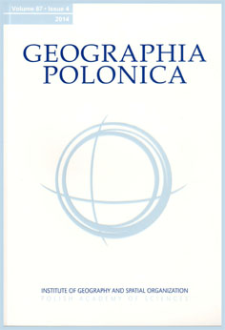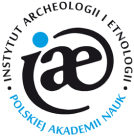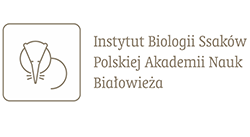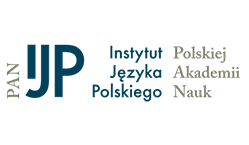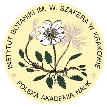- Search in all Repository
- Literature and maps
- Archeology
- Mills database
- Natural sciences
Advanced search
Advanced search
Advanced search
Advanced search
Advanced search

Object
Title: Impact of mitigation measures on the Urban Heat Island phenomenon in the city of Modena, Italy
Creator:
Marchesi, Stefano ; Zauli, Sajani Stefano ; Lauriola, Paolo
Date issued/created:
Resource type:
Subtitle:
Geographia Polonica Vol. 87 No. 4 (2014)
Publisher:
Place of publishing:
Description:
Type of object:
Abstract:
Urban planners are increasingly paying more attention to the topic of UHI. Within the framework of the EU-UHI Project, an industrial area inside the municipality of Modena was selected as a pilot-area for the Emilia-Romagna Region. In this paper we present some results obtained with RayMan, a model which estimates bioclimatic discomfort based on the human radiative budget. Some simulations of the impact of mitigation measures have been carried out, taking into account the insertion of greenery and building modifications. Both intra-diurnal and whole day effects have been compared.
References:
1. BŁAŻEJCZYK K., JENDRITZKY G., BRÖDE P., FIALA D., HAVENITH G., EPSTEIN Y., PSIKUTA A., KAMPMANN B., 2013. An introduction to the Universal Thermal Climate Index (UTCI). Geographia Polonica, vol. 86, no. 1, pp. 5-10.
http://dx.doi.org/10.7163/GPol.2013.1 -
2. Büttner K., 1938. Physikalische Bioklimatologie. Leipzig: Akademische Verlagsgesellschaft.
3. Fanger P.O., 1970. Thermal comfort: Analysis and applications in environmental engineering. Copenhagen: Danish Technical Press.
4. HÖPPE P., 1999. The physiological equivalent temperature– a universal index for the biometeorological assessment of the thermal environment. International Journal of Biometeorology, vol. 43, no. 2, pp. 71-75.
http://dx.doi.org/10.1007/s004840050118 -
5. Matzarakis A., Matushek O., 2011. Sky view factor as a parameter in applied climatology – rapid estimation by the SkyHelios model. Meteorologische Zeitschrift, vol. 20, no. 1, pp. 39-45.
http://dx.doi.org/10.1127/0941-2948/2011/0499 -
6. Matzarakis A., Mayer H., Iziomon M.G., 1999. Applications of a universal thermal index: physiological equivalent temperature. International Journal of Biometeorology, vol. 43, no. 2, pp. 76-84.
http://dx.doi.org/10.1007/s004840050119 -
7. Matzarakis A., Rutz F., Mayer H., 2007. Modelling radiation fluxes in simple and complex environments– application of the RayMan model. International Journal of Biometeorology, vol. 51, no. 4, pp. 323-334.
http://dx.doi.org/10.1007/s00484-006-0061-8 -
8. Matzarakis A., Rutz F., Mayer H., 2010. Modelling radiation fluxes in simple and complex environments: basics of the RayMan model. International Journal of Biometeorology, vol. 54, no. 2, pp. 131-139.
http://dx.doi.org/10.1007/s00484-009-0261-0 -
Relation:
Volume:
Issue:
Start page:
End page:
Detailed Resource Type:
Format:
Rozmiar pliku 1,6 MB ; application/pdf
Resource Identifier:
oai:rcin.org.pl:50352 ; 0016-7282 ; 10.7163/GPol.2014.36
Source:
CBGiOS. IGiPZ PAN, sygn.: Cz.2085, Cz.2173, Cz.2406 ; click here to follow the link
Language:
Rights:
Licencja Creative Commons Uznanie autorstwa-Bez utworów zależnych 3.0 Polska
Terms of use:
Zasób chroniony prawem autorskim. [CC BY-ND 3.0 PL] Korzystanie dozwolone zgodnie z licencją Creative Commons Uznanie autorstwa-Bez utworów zależnych 3.0 Polska, której pełne postanowienia dostępne są pod adresem: ; -
Digitizing institution:
Instytut Geografii i Przestrzennego Zagospodarowania Polskiej Akademii Nauk
Original in:
Projects co-financed by:
Unia Europejska. Europejski Fundusz Rozwoju Regionalnego ; Program Operacyjny Innowacyjna Gospodarka, lata 2010-2014, Priorytet 2. Infrastruktura strefy B + R
Access:
Object collections:
- Digital Repository of Scientific Institutes > Partners' collections > Institute of Geography and Spatial Organization PAS (IGiPZ PAN) > Publications of IGiPZ PAN and employees
- Digital Repository of Scientific Institutes > Partners' collections > Institute of Geography and Spatial Organization PAS (IGiPZ PAN) > Library > Series/Journals/Periodics
- Digital Repository of Scientific Institutes > Literature > Journals/Articles
Last modified:
Mar 25, 2021
In our library since:
Dec 8, 2014
Number of object content downloads / hits:
1639
All available object's versions:
https://rcin.org.pl./publication/68488
Show description in RDF format:
Show description in RDFa format:
Show description in OAI-PMH format:
Objects Similar
Błażejczyk, Krzysztof
Bąkowska, Monika
Nowak, Maciej Jacek Rocco, Roberto
Bonazzi, Filippo Capucci, Marcello Muscio, Alberto Rizzo, Catia
Bröde, Peter Krüger, Eduardo L. Fiala, Dusan
Noro, Marco Busato, Filippo Lazzarin, Renato

 INSTYTUT ARCHEOLOGII I ETNOLOGII POLSKIEJ AKADEMII NAUK
INSTYTUT ARCHEOLOGII I ETNOLOGII POLSKIEJ AKADEMII NAUK
 INSTYTUT BADAŃ LITERACKICH POLSKIEJ AKADEMII NAUK
INSTYTUT BADAŃ LITERACKICH POLSKIEJ AKADEMII NAUK
 INSTYTUT BADAWCZY LEŚNICTWA
INSTYTUT BADAWCZY LEŚNICTWA
 INSTYTUT BIOLOGII DOŚWIADCZALNEJ IM. MARCELEGO NENCKIEGO POLSKIEJ AKADEMII NAUK
INSTYTUT BIOLOGII DOŚWIADCZALNEJ IM. MARCELEGO NENCKIEGO POLSKIEJ AKADEMII NAUK
 INSTYTUT BIOLOGII SSAKÓW POLSKIEJ AKADEMII NAUK
INSTYTUT BIOLOGII SSAKÓW POLSKIEJ AKADEMII NAUK
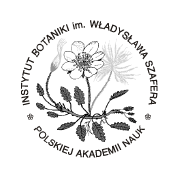 INSTYTUT CHEMII FIZYCZNEJ PAN
INSTYTUT CHEMII FIZYCZNEJ PAN
 INSTYTUT CHEMII ORGANICZNEJ PAN
INSTYTUT CHEMII ORGANICZNEJ PAN
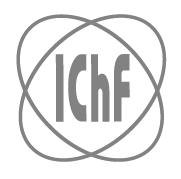 INSTYTUT FILOZOFII I SOCJOLOGII PAN
INSTYTUT FILOZOFII I SOCJOLOGII PAN
 INSTYTUT GEOGRAFII I PRZESTRZENNEGO ZAGOSPODAROWANIA PAN
INSTYTUT GEOGRAFII I PRZESTRZENNEGO ZAGOSPODAROWANIA PAN
 INSTYTUT HISTORII im. TADEUSZA MANTEUFFLA POLSKIEJ AKADEMII NAUK
INSTYTUT HISTORII im. TADEUSZA MANTEUFFLA POLSKIEJ AKADEMII NAUK
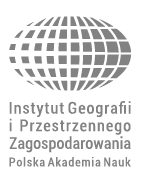 INSTYTUT JĘZYKA POLSKIEGO POLSKIEJ AKADEMII NAUK
INSTYTUT JĘZYKA POLSKIEGO POLSKIEJ AKADEMII NAUK
 INSTYTUT MATEMATYCZNY PAN
INSTYTUT MATEMATYCZNY PAN
 INSTYTUT MEDYCYNY DOŚWIADCZALNEJ I KLINICZNEJ IM.MIROSŁAWA MOSSAKOWSKIEGO POLSKIEJ AKADEMII NAUK
INSTYTUT MEDYCYNY DOŚWIADCZALNEJ I KLINICZNEJ IM.MIROSŁAWA MOSSAKOWSKIEGO POLSKIEJ AKADEMII NAUK
 INSTYTUT PODSTAWOWYCH PROBLEMÓW TECHNIKI PAN
INSTYTUT PODSTAWOWYCH PROBLEMÓW TECHNIKI PAN
 INSTYTUT SLAWISTYKI PAN
INSTYTUT SLAWISTYKI PAN
 SIEĆ BADAWCZA ŁUKASIEWICZ - INSTYTUT TECHNOLOGII MATERIAŁÓW ELEKTRONICZNYCH
SIEĆ BADAWCZA ŁUKASIEWICZ - INSTYTUT TECHNOLOGII MATERIAŁÓW ELEKTRONICZNYCH
 MUZEUM I INSTYTUT ZOOLOGII POLSKIEJ AKADEMII NAUK
MUZEUM I INSTYTUT ZOOLOGII POLSKIEJ AKADEMII NAUK
 INSTYTUT BADAŃ SYSTEMOWYCH PAN
INSTYTUT BADAŃ SYSTEMOWYCH PAN
 INSTYTUT BOTANIKI IM. WŁADYSŁAWA SZAFERA POLSKIEJ AKADEMII NAUK
INSTYTUT BOTANIKI IM. WŁADYSŁAWA SZAFERA POLSKIEJ AKADEMII NAUK
